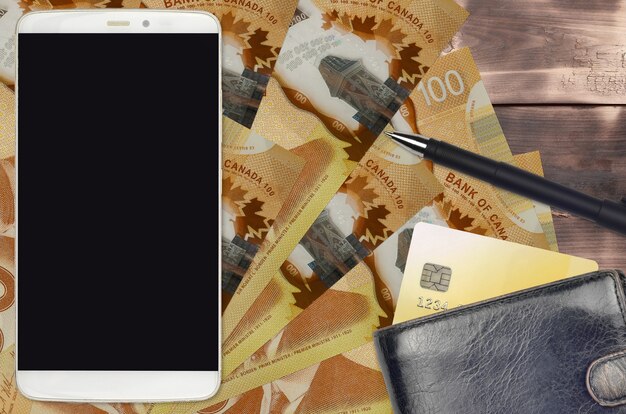Exploring Apple's Dividend Policy: Does Apple Pay Dividends?
Apple Inc., a titan in technology, is revered for its innovation and premium product offerings. However, its financial policies, particularly regarding dividends, deserve equal attention. Many investors ask: "Does Apple pay dividends?" This query merits a dive into Apple's financial strategies and their implications for investors. Below, we explore whether Apple distributes dividends, the significance for shareholders, and related topics essential for the informed investor.
📈 Apple’s Financial Strategy: An Overview
Apple’s Financial Health
Apple's financial trajectory has been exceptional, showcasing consistent revenue and profit growth. These financial strengths allow Apple to share earnings with its shareholders, but it’s essential to evaluate how they choose to do that.
Dividend History and Philosophy
For a long period, Apple did not pay dividends, focusing instead on reinvesting profits into research and product development. However, Apple's expansive revenue streams have enabled it to adopt a hybrid approach, balancing growth investment with shareholder rewards.
💵 Does Apple Pay Dividends?
Current Dividend Practices
Yes, Apple currently pays dividends. In 2012, Apple reintroduced a dividend program after a 17-year hiatus, guided by the intent to return capital to shareholders. The move was part of a larger capital return program reaffirming their commitment to shareholder value.
Dividend Payment Structure
Apple issues quarterly dividends, allowing shareholders to receive payments four times per year. Although the dividend yield may not be as high as some other companies due to Apple's significant market capitalization and exceptional share price growth, consistent payouts offer a stable income stream for investors.
📊 Factors Influencing Apple's Dividend Policy
Cash Reserves and Liquidity
Apple maintains substantial cash reserves, providing it flexibility in its capital allocation strategy. This liquidity is a critical factor allowing Apple to sustain its dividend payouts while investing in growth and innovation.
Market Conditions and Shareholder Expectations
Market dynamics also shape dividend policies. When economic conditions or industry-specific factors urge caution, companies like Apple may adjust their cash return strategies, balancing dividends and stock buybacks.
Innovation and Growth Investment Needs
Apple’s legacy centers around innovation. Consequently, the need to fund research, manage acquisitions, and foster new product lines sometimes influences the amount of free cash allocated to dividends.
🤔 Why Do Investors Value Dividends?
Consistent Income Stream
Dividends provide a regular income stream, making them appealing to retirees and conservative investors seeking reliable returns without selling shares.
Sign of Financial Health
A regular dividend can signal a company’s robust financial health and confidence in ongoing profitability, instilling further investor confidence.
Total Return Enhancement
For many investors, dividends enhance total returns by providing both income and potential capital appreciation through reinvested dividends.
📈 Related Financial Strategies
Stock Buybacks
A Complementary Approach
In addition to dividends, Apple engages in stock buybacks, repurchasing shares to reduce supply and potentially increase value. Buybacks complement dividends by enhancing earnings per share and contributing to long-term investor returns.
Capital Allocation Strategies
Balancing Acts
Apple’s capital allocation reflects a balanced strategy, with portions directed to R&D, acquisitions, dividends, and buybacks. This diversified approach clarifies how Apple balances immediate shareholder returns with future growth investments.
💼 Making Informed Investment Decisions with Apple
Understanding Total Return
Investors should consider both dividend income and capital appreciation when evaluating Apple’s total return potential. It’s crucial to align investment choices with individual financial goals and risk appetites.
Evaluating Long-Term Prospects
For prospective shareholders, evaluating Apple's innovation track record, growth strategies, and market position offers deeper insights into potential long-haul value beyond dividends.
🔍 Key Takeaways
Here’s a concise breakdown of Apple’s approach to dividends and what it means for investors:
- 📊 Apple Pays Dividends: After a lengthy pause, Apple resumed dividend payments in 2012, reflecting its commitment to sharing financial success with shareholders.
- 💼 Balanced Strategies: Apple balances dividends with stock buybacks, investments in innovation, and maintaining robust cash reserves.
- 🔍 Dividends = Financial Health: Regular dividends are a marker of Apple’s financial confidence, making them attractive to long-term investors.
- 🎯 Consider Total Returns: Investors should weigh dividends alongside potential for capital appreciation for a comprehensive view of Apple's value proposition.
- ✅ Strategic Allocation: By investing in growth while offering shareholder returns, Apple continues to appeal to a diverse investor base.
Concluding Thoughts on Apple's Dividend Approach
Apple’s dividend policy exemplifies a strategic balance between rewarding shareholders and ensuring ongoing innovation and competitive positioning. As a prospective or current investor, understanding Apple’s broader financial strategies equips you to make savvy decisions in a dynamic market context. Whatever your financial goals, Apple's careful equilibrium in capital distribution is key to understanding its long-term value proposition.
